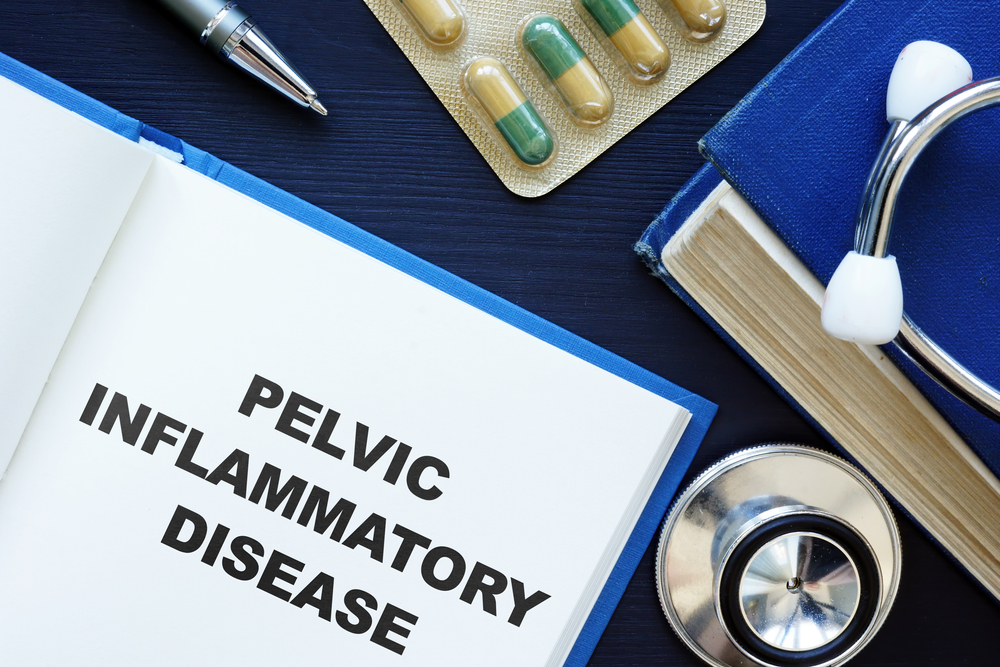Overview
Pelvic inflammatory disease (PID) is an infection of the female reproductive organs. The pelvis is in the lower abdomen and includes the fallopian tubes, ovaries, cervix, and uterus.
Several different types of bacteria can cause PID, including the same bacteria that cause sexually transmitted infections (STIs), gonorrhoea and chlamydia.
Key facts
- The risk of pelvic inflammatory disease increases if you have gonorrhoea or chlamydia
- However, PID can occur without having an STI.
Symptoms
Symptoms are common but don’t always occur. Symptoms can include:
- Pain in the lower abdomen (the most common symptom)
- Pain in the upper abdomen
- Fever
- Painful sex
- Increased or foul-smelling vaginal discharge
- Irregular bleeding
- Painful urination
- Tiredness
Pelvic inflammatory disease can cause mild or moderate pain. However, for some women, they can experience severe pain and symptoms, such as:
- Sharp pain in the abdomen
- Vomiting
- Fainting
- A high fever (greater than 101°F)
If these occur, contact the doctor immediately or go to an emergency room.
Diagnosis
Your doctor may be able to diagnose PID after taking a history of symptoms being experienced. In most cases, the doctor will run tests to confirm the diagnosis. These can include:
- A pelvic exam to check the pelvic organs
- A cervical culture to check the cervix for infections
- A urine test to check for signs of blood, cancer, and other diseases
After collecting samples, your doctor sends these samples to a laboratory.
Assessing damage
If the doctor determines that you have pelvic inflammatory disease, they may run additional tests to check your pelvic area for damage. This is because PID can cause scarring on your fallopian tubes and, sometimes, permanent damage to the reproductive organs. These additional tests include:
- Pelvic ultrasound: This is an imaging test that uses sound waves to create pictures of your internal organs
- Endometrial biopsy: A small sample from the lining of your uterus is removed in a minor surgical procedure
- Laparoscopy: A laparoscope is a small telescope with a light source and camera at one end, which is inserted into your abdomen through a small cut in a minor surgery
Causes
An infection in the female reproductive system causes pelvic inflammatory disease (PID). In most cases, the condition is caused by a bacterial infection spreading from the vagina or cervix into the womb, fallopian tubes and ovaries. The bacteria that can cause PID can spread through sexual contact.
PID is often caused by more than one bacterium, and it can sometimes be difficult for doctors to pinpoint which is responsible.
Prevention
You can reduce the chances of getting PID by:
- Practising safer sex
- Getting tested for sexually transmitted infections
- Wiping from front to back after using the bathroom to stop bacteria from entering the vagina
Treatments
The primary treatment is antibiotics. The doctor may give you two different types of antibiotics to ensure that the treatment covers a variety of bacteria that cause PID. Even if you feel better or your symptoms go away, please ensure that you complete the course of treatment.
In rare circumstances. the pelvic inflammatory disease may require surgery and is only necessary if an abscess in your pelvis ruptures or your doctor suspects that an abscess will rupture.
Conclusion
Pelvic inflammatory disease is a treatable condition, and most women fully recover. However, some women with a history of repeat episodes of PID will have difficulty getting pregnant, but pregnancy is still possible for most women.
MOST COMMON

